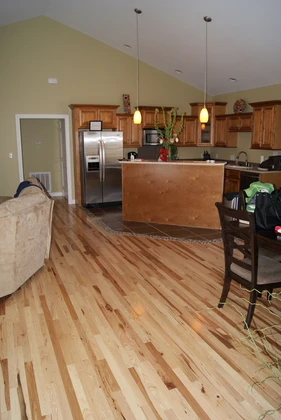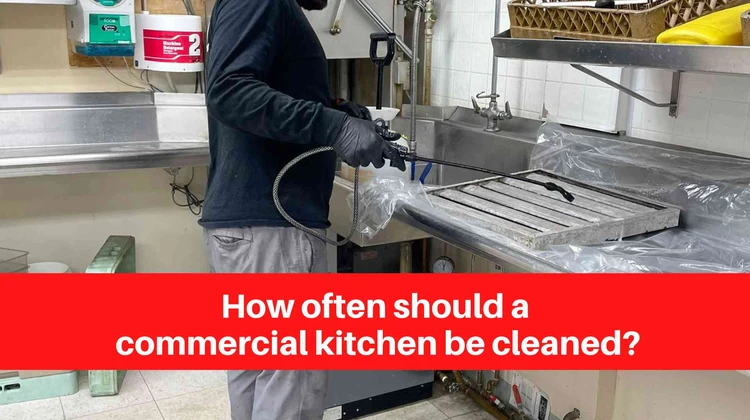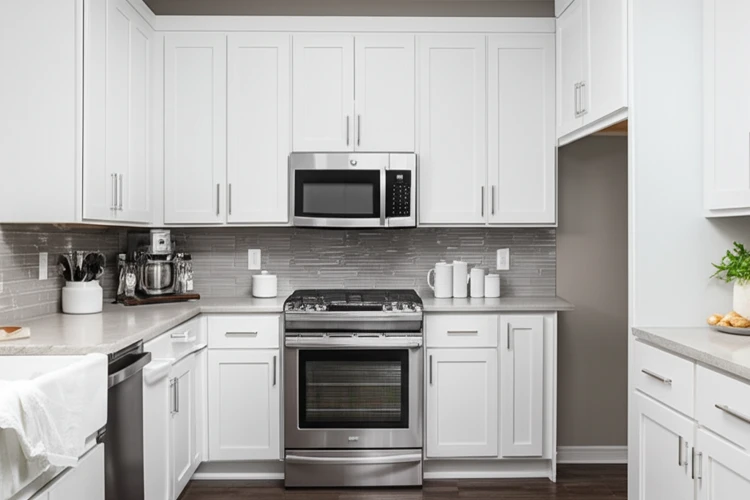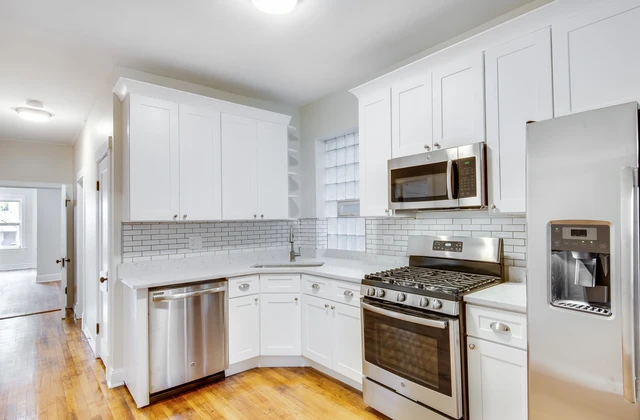Disclaimer: As an Amazon Associate, I earn commission from qualifying purchases.
Redoing kitchen countertops without replacing them is a cost-effective and sustainable solution for homeowners, renters, and kitchen enthusiasts. According to recent studies, redoing countertops can save up to 70% compared to full replacements, making it an attractive option for budget-conscious individuals.
Additionally, the environmental impact is significantly reduced, as fewer materials end up in landfills. This article will guide you through the process, from assessing your current countertops to implementing various redoing methods, all while ensuring sustainability and cost-effectiveness.
Why Redo Kitchen Countertops Without Replacing?
Redoing kitchen countertops without replacing them offers several advantages, including cost savings, eco-friendliness, and reduced disruption. According to the National Association of Home Builders, the average cost of replacing kitchen countertops ranges from $2,000 to $4,000, whereas redoing can cost as little as $500. Environmentally, redoing countertops reduces waste and lowers the carbon footprint associated with manufacturing new materials. Additionally, the process is less disruptive, often taking only a few days compared to the weeks needed for a full replacement.
Assessing Your Current Kitchen Countertops
Before embarking on a countertop redo, it’s crucial to assess their current condition. Here’s a step-by-step checklist:
- Identify Material: Determine the material of your countertops (e.g., laminate, granite, quartz).
- Check for Damage: Look for cracks, chips, burns, or deep scratches.
- Test Adhesion: Ensure the countertop is securely attached to the base.
- Evaluate Finish: Assess the current finish for signs of wear or fading.
- Professional Inspection: If unsure, consult a professional for a thorough assessment.
Popular Methods for Redoing Kitchen Countertops Without Replacing
Several methods can transform your kitchen countertops without the need for replacement:
Painting
Painting is a straightforward method that can dramatically change the look of your countertops. It is cost-effective and suitable for various materials, including laminate and wood. However, it requires careful preparation and may not be as durable as other methods.
Refinishing
Refinishing involves sanding down the surface and applying a new finish. This method is ideal for wood and concrete countertops, offering a fresh look and improved durability. It requires more skill and time but provides a high-quality result.
Resurfacing
Resurfacing involves applying a new layer of material, such as epoxy or concrete, over the existing surface. This method is versatile and can be used on most countertop materials. It offers a durable, high-quality finish but requires more extensive preparation and application.
Step-by-Step Guide: Painting Kitchen Countertops
Painting kitchen countertops is a popular DIY method. Here’s a step-by-step guide:
- Materials Needed: Primer, paint, brushes, rollers, painter’s tape, sandpaper, and cleaning supplies.
- Preparation: Clean the countertops thoroughly to remove any grease or dirt. Sand the surface lightly to improve adhesion.
- Priming: Apply a primer designed for your countertop material. Allow it to dry completely.
- Painting: Use a brush or roller to apply the paint evenly. Allow each coat to dry before applying the next. Usually, two to three coats are sufficient.
- Finishing: Apply a clear sealant to protect the paint and ensure durability.
Step-by-Step Guide: Refinishing Kitchen Countertops
Refinishing kitchen countertops involves more steps but offers a durable finish. Here’s how to do it:
- Materials Needed: Sandpaper, sander, stain, sealant, brushes, and cleaning supplies.
- Preparation: Clean the countertops and remove any existing finish using a stripper if necessary.
- Sanding: Use a sander to smooth the surface, starting with coarse-grit sandpaper and progressing to finer grits.
- Staining: Apply the stain evenly with a brush. Allow it to dry completely.
- Sealing: Apply a clear sealant to protect the finish and enhance durability.
Step-by-Step Guide: Resurfacing Kitchen Countertops
Resurfacing kitchen countertops with epoxy or concrete provides a robust and attractive finish. Here’s a detailed guide:
- Materials Needed: Epoxy kit, concrete mix, trowel, brushes, sandpaper, and cleaning supplies.
- Preparation: Clean the countertops and sand the surface to improve adhesion.
- Application: Mix the epoxy or concrete according to the manufacturer’s instructions. Apply the mixture evenly using a trowel.
- Finishing: Allow the material to cure completely. Sand lightly if necessary and apply a sealant for added protection.
Product Recommendations for Redoing Kitchen Countertops
Choosing the right products is crucial for a successful countertop redo. Here are some recommendations:
Painting
- Primer: Zinsser Bulls Eye 1-2-3 Primer
- Paint: Rust-Oleum Countertop Transformations Kit
- Sealant: Minwax Polycrylic Protective Finish
Refinishing
- Sander: DEWALT Random Orbit Sander
- Stain: Minwax Wood Finish Penetrating Stain
- Sealant: Varathane Water-Based Polyurethane
Resurfacing
- Epoxy Kit: Stone Coat Countertops Epoxy Kit
- Concrete Mix: Quikrete Countertop Mix
- Sealant: Cheng Concrete Sealer
Best Practices for Maintaining Redone Kitchen Countertops
Proper maintenance is essential to ensure the longevity of your redone kitchen countertops. Here are some best practices:
- Cleaning: Use mild cleaning solutions and avoid abrasive scrubbers.
- Avoid Heat: Do not place hot pans directly on the countertop to prevent burns.
- Regular Sealing: Reapply sealant periodically to maintain protection.
- Quick Spill Cleanup: Wipe up spills immediately to prevent staining.
Common Mistakes to Avoid When Redoing Kitchen Countertops
Avoiding common mistakes can save you time and money. Here are some to watch out for:
- Improper Preparation: Ensure the surface is clean and well-prepared before applying any new material.
- Using the Wrong Materials: Choose products specifically designed for your countertop material.
- Rushing the Process: Allow each step to dry or cure completely before proceeding.
- Ignoring Safety Precautions: Always wear protective gear and work in a well-ventilated area.
Eco-Friendly Tips for Redoing Kitchen Countertops
Sustainability is a growing concern for homeowners. Here are some eco-friendly tips for redoing kitchen countertops:
- Use Non-Toxic Products: Opt for paints, stains, and sealants that are low in VOCs (volatile organic compounds).
- Reuse Materials: Consider using recycled materials or repurposing existing countertops.
- Energy-Efficient Tools: Choose energy-efficient sanders and other tools to reduce your carbon footprint.
- Proper Disposal: Dispose of waste materials responsibly, following local recycling guidelines.
FAQs
How long does it take to redo kitchen countertops without replacing them?
The time required to redo kitchen countertops without replacing them varies depending on the method chosen. Painting can take a weekend, while refinishing or resurfacing may take several days to a week, including drying and curing times.
What is the cost difference between redoing and replacing kitchen countertops?
Redoing kitchen countertops can cost as little as $500, whereas replacing them can range from $2,000 to $4,000. The cost savings are significant, making redoing a more budget-friendly option.
Can I redo my kitchen countertops if they are laminate?
Yes, laminate countertops can be redone using painting or resurfacing methods. Ensure the surface is well-prepared and use products designed for laminate to achieve the best results.
Are there any health risks associated with redoing kitchen countertops?
Health risks can be minimized by using low-VOC products and working in a well-ventilated area. Always follow safety guidelines and wear protective gear to avoid exposure to harmful chemicals.
How often should I redo my kitchen countertops?
The frequency of redoing kitchen countertops depends on their condition and usage. With proper maintenance, redone countertops can last several years. Regular cleaning and periodic sealing can extend their lifespan.
What are the best materials for resurfacing kitchen countertops?
Epoxy and concrete are popular choices for resurfacing kitchen countertops. Epoxy provides a glossy, durable finish, while concrete offers a modern, industrial look. Both materials are versatile and can be customized to match your kitchen’s aesthetic.
Conclusion
Redoing kitchen countertops without replacing them is a cost-effective and sustainable solution that offers numerous benefits. By assessing your current countertops, choosing the right method, and following best practices, you can transform your kitchen while saving money and reducing environmental impact.
Whether you opt for painting, refinishing, or resurfacing, the key is proper preparation and using high-quality products. With these guidelines, you can achieve a stunning kitchen makeover that stands the test of time.







